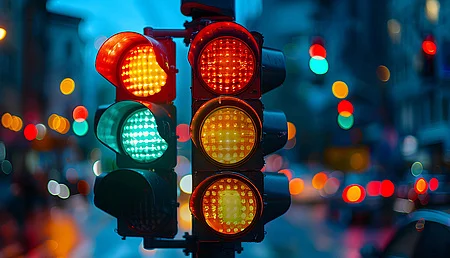
More than meets the eye: trademark functions in the modern era
Nothing in Intellectual Property (IP) law is one-dimensional, least of all the ubiquitous trademark. Just as the definition of these intangible assets has evolved to include holograms, motions, shapes and scents, so has their role in modern business expanded upon their traditional function.
This signifies a paradigm shift of the trademark from a means "to distinguish goods from one undertaking from those of other undertakings" (Article 4, EU Trade Mark Regulation) to a public communication tool. However, this phenomenon is not merely isolated to the social sphere, having repercussions on the juridical protection of trademarks as well as their future filing patterns.
To some degree, this trend is the natural outcome of deepening reciprocity in seller-consumer dealings, but a growing appreciation of the strategic value of trademarks among owners is also at play. And this understanding can trace its origin to the influence of trademark attorneys, who have become more active in decision-making processes. Thus, it is incumbent upon IP counsels to continue to foster this responsive attitude so that their clients get the most out of established and emergent trademarking schemes.
Gazing into the past
It is all too easy to assume trademark innovation to be a modern contrivance and overlook the history of development underlying commercial marks. That is to say, "ur-trademarks" were never a static concept prior to the codification of modern IP law. Take the various signatures and stamps applied by Mediterranean artisans for centuries in ancient Egypt, Greece and Rome, which were as much for personal aggrandizement (and belittling rivals) as for ensuring quality production. While these examples may constitute a prototype for brand identity, they differ from trademarks as we recognize them today in that their use, as far as we can interpret, was primarily intended to redound upon the producer rather than engage the consumer.
Leaping forward, even the first written regulation governing the use of marks in commerce, England's Statue concerning Bakers (Statutum de Pistoribus), circa 1266, was not completely analogous to current legal frameworks, being a combined trademark, certification and traceability system. "Every baker shall have his seal and seal his bread, whereby it may be known whose bread it is and if he did not do this, he shall be grievously amerced." The statute was a companion to the more famous Assize of Bread and Ale and served as a means to identify and punish tortious bakers who sold undersized or unacceptable goods.

The harsh penalties laid out in the Statute concerning Bakers and similar ordinances are believed to be why the number 13 is sometimes called a "baker's dozen." Fearing steep fines and public flogging for falling short of official measures, breadmakers would often add an extra portion of their goods "just in case."
Taking this deeper perspective on the development of trademarks, it is clear that this form of IP lends itself to new or modified applications, a fact savvy trademark holders are turning to their advantage in our current time.
The traditional look of trademarks
When all is said and done, most consumers are only obliquely aware of what a trademark is in the letter of the law, if at all. This means a mark that satisfies regulatory concerns alone would have very limited market potential. Taking both the legal and promotional aspects of the modern trademark into consideration reveals a fourfold role:
• Identification: to distinguish the origin of a product from others
• Quality proposition: to guarantee the preservation of a product's characteristics
• Marketing exposure: to advertise the product and those related to it
• Lifestyle promise: to communicate a brand image
Case law traditionally focuses on the identifying function (discussed under "likelihood of confusion") and, if the mark is more famous, also on the marketing purpose (debated under "likelihood of association, diluting, tarnishing and tailgating"). Less attention has been paid to those roles allied with product quality and lifestyle branding, but, as we shall see, that is beginning to change.
Changing consumer perspectives
The relative weighting of trademark functions ascribed by conventional practice no longer matches 21st-century consumer perceptions. For the most part, the modern-day purchaser neither knows nor cares about the source-identifying purpose of a mark, with any changes in ownership being a non-issue. As an example, the BENTLEY trademark was originally owned by Bentley (1919), which was later bought by Rolls-Royce (1931), which was sold in part to Vickers (1980), who sold Rolls-Royce Motor Cars to Volkswagen (1998). Despite this turbulent history of nationalizations, mergers and acquisitions, as far as a driver is concerned, a Bentley is a Bentley is a Bentley. To most customers, source identification is a legal fiction without any practicality.

In addition to classic British craftsmanship, Bentley exemplifies the convoluted IP histories behind many heritage car brands. In the end, consumers are more interested in the promise of character and tradition than what corporate entity holds the IP rights. (Image source: iStock. Credit: imagefactory-studio)
With regard to fast-moving consumer goods (FMCG), the general public still wants assurances of quality but, ultimately, has little recourse when standards slip. Of the four roles, this leaves us with trademarks as containers of brand image and focal points of marketing efforts. Having exhausted the more legally advantaged features, we arrive at the modern trademark's primary duty from the buyer's point of view.
Beauty is in the eye of the beholder
"To me, marketing's about values," mused Steve Jobs in his 1997 "Think Different" speech. "This is a very complicated world; it's a very noisy world, and we're not going to get a chance to get people to remember much about us. No company is. And so, we have to be really clear on what we want them to know about us."
A trademark that has succeeded in establishing itself in the minds of the relevant public becomes a shorthand for the product or service to which it is attached. It operates as a synecdoche – an individual example that stands in for the entire category. Take drinking a Coke, googling a question, or, most recently, wondering whether ChatGPT has sent you an email instead of your colleague. Many more examples exist beyond soft drinks, search engines and generative AIs, but the linguistic inclination is the same for all.
Even so, such built-in recognition for trademarks carries with it the danger of genericide, meaning owners must take visible and effectual measures to ensure the continued registerability of their IP. And yet, customers are as untroubled as they are oblivious to these woes and will use the most convenient language rather than the most accurate.
Of course, this should not be interpreted as apathy – quite the opposite. When a trademark acts as the preferred means of communicating ideas, it reinforces (largely) positive notions connected to a product or service. While it is perilously difficult to influence this process, once a brand image is distilled into a trademark, that mark is then transformed into an emotional locus and, therefore, a valuable promotional tool.

Creating a new product or service for which no nomenclature already exists can be a double-edged sword for brand owners. If a trademark is consistently used by the public to describe a kind of deliverable, it risks becoming generic. And a generic trademark is not eligible for registration.
The result is a constant push-pull struggle to maintain both trademark exposure and exclusivity – though the integrity of registered rights should be prioritized if a choice has to be made. After all, it is easier for a brand to launch a new awareness campaign than to acquire distinctiveness or appeal a trademark revocation.
Trademarks and business foresight
As mentioned at the outset, the changing trademark paradigm is not confined to consumer relations; businesses are able to employ trademarks in ways that are not immediately associated with sales.
For one, owners can use a trademark application or an international extension via the Madrid System to signal an intent to operate in a new territory. By the same token, a request to connect additional Nice Classes to an existing mark implies entry into fresh markets. But what do these actions serve beyond their prima facie usefulness?
In a word, deterrence. Or, to put it more elaborately, deterrence and seizing the initiative from competitors by forcing them to react. Depending on local requirements for genuine / commercial use, a registrant may be able to stay on the books for up to five years before being obliged to prove the mark's presence in the market. This can give a retail plan ample time to catch up, provide R&D projects with extra breathing space or spur negotiations with potential partners and licensees in the region.
Naturally, this approach is precluded in the United States by the fact that the obligation to use a trademark is not postponed until after grant. Instead, following Section 15 of the U.S. Code, a commercial strategy that started with a relatively low-key trademark deployment could be "ramped up" to full release after five years, when the mark's validity was as close to ironclad as can be hoped for in our industry. A similar course of action is available in the European Union thanks to Article 61's limitation in consequence of acquiescence (EU Trade Mark Regulation, as above) – provided the filings were made in good faith, of course.
There are many avenues by which trademarks can generate revenue for their owners outside of direct sales. We have already touched upon the theme of licensing, but as brands continue to widen their scope geographically, the royalties generated by these business partnerships can only grow as a percentage of total income. Given how tempting this prospect is, attorneys must redouble their efforts to ensure clients are well informed of the reputational and legal liabilities. When push comes to shove, trademark holders could find themselves shut out from their preferred litigative forum thanks to an impetuously signed licensing agreement.

There is a good reason trademarks are frequently referred to as IP "assets." These exclusive rights can be licensed to facilitate market expansion, increase brand exposure and generate additional income. For startups, a strongly performing trademark portfolio can attract outside investment.
Another riskier function of the modern trademark is as collateral for loans. Clients will likely know the hazards of taking this path, but circumstances may warrant or demand it. That said, attracting investment capital by showcasing a portfolio's strengths is a much safer bet overall — one need only reflect on the 17 Sustainable Development Goals from the United Nations to see why.
Those trademarks that indicate environmentally favorable goods and services have enhanced value both to their owners and the relevant public. Investors are cognizant of this fact, making it highly desirable to demonstrate accredited "green" assets within a portfolio. Though this kind of IP registration typically requires meeting a higher bar, those trademarks (and owners) that prevail receive a fitting cachet.
A vision of the future
Trademarks perform the same legal functions as they traditionally have but are now inextricably linked with branding, marketing and public relations. Consequently, the raison d'être of a trademark has shifted to communicate a message, meaning the yardstick of absolute grounds may not be so much its distinctiveness as its ability to speak, evoke and recall. The level of descriptiveness could then, at least in theory, be set much lower than at present.
However, on an absolute level, trademarks cannot be merely descriptive or long-winded because the customer would no longer perceive them as indicating a single origin, even if the nature of that commercial entity remains of little concern. While on a relative level, future marks must still differ enough one from another phonetically, visually and conceptually to be allowed to coexist.
At the courts, this convergent evolution could manifest in a rebalancing of which cases lead to disputation. On one pan of Justice's scales, otherwise similar trademarks may coexist if the overall image they evoke is different. On the other, signs previously judged dissimilar may become too close in this milieu if they convey the same appeal to lifestyle and fashion.

IP owners and practitioners must not lose sight of the fact the primary audience of any trademark is the consumer. Confusing or alienating customer bases for the sake of chasing trends risks their recognition, goodwill and brand loyalty. Without these, repeat business is not possible.
Until such a time, fora will continue to use established procedures in their decisions. In fact, in August of this year, the EUIPO Fifth Board of Appeal denied genuine use of Ferrari's TESTAROSSA mark for automobiles. The verdict was based on a straightforward application of the principle of origin since the cars were being sold only by unaffiliated dealers, not the trademark owner. Had the Board taken the perspective argued here that the storytelling function has its prerogative, use would have subsisted: Sports car enthusiasts and Miami Vice fans still reverently associate the brand with the legendary car maker from Maranello.
We shall have to wait and see how and how soon this new trademark tradition will come to pass.
A version of this article was first published in The Trademark Lawyer Magazine, Issue 5, 2023.
Filed in

Learn why brand name and trademark law matter for your business, from marketing efforts to bottom lines.



